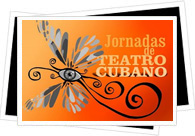Cubans are known to have been enjoying theatrical performances since the 1570's.
It was recorded in the city council minutes that a play was planned to be staged in Havana.
Theatrical displays would be incorporated into Corpus Christi and the saints day festivals that each town in the country would celebrate.
In the 19th century, when both romantic and common theatre were popular with audiences, the Cuban theatre thrived.

The 20th century saw Cuba theatre go into decline, lasting for 3 decades. The only theatre in Cuba which did not suffer was the Alhambra whose buffoon characters were popular, although the Cuban Zarzuela musical theatre, provided some relief during the 1920's.
Pocket theatres or Salitas sprung up across Havana in the 50's and the following decade saw new talent in the theatre from writers through to directors.
The 70's, however, saw a big shadow cast on the industry as congress deemed certain people and activities as 'evil influences'. Many people lost their jobs, theatre storage warehouses were destroyed and many plays, playwrights and authors were banned.
In the 1980's banal and popular pieces took the stage bringing back audiences. Theatre in the Caribbean began to see a shift from white to black actors and island stories being portrayed in addition to traditional theatrical pieces of the last century.
Towards the end of the 20th century, a number of Caribbean playwrights have been gaining acclaim and fame. Some of the condemned works of before have since been performed, although many still remain banned.